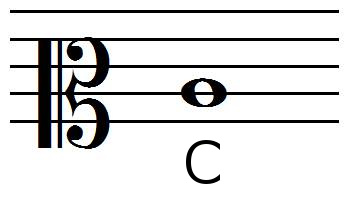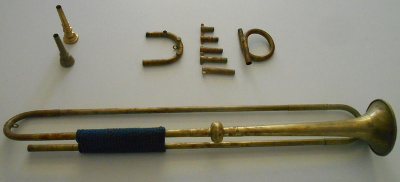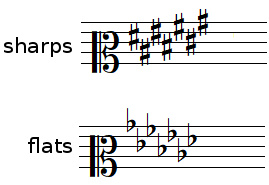The mezzo-soprano clef determines the position of the C note on the staff 


From this reference, all others music notes will be placed before and after the C note:

What instruments use the mezzo-soprano clef?
Mezzo-soprano was used for the mezzo-soprano voices (middle voice of women and children), but nowadays it is used for transposition and for players or conductors who need to transpose.
The mezzo-soprano clef to transpose (players)
Some players of the wind instrument family must sometimes transpose. Among the musicians of the symphony orchestra, this is the case for trumpeters and horn players:
Why do trumpeters and horn players have to transpose their scores at sight? The reason is historical: Modern trumpets and horns have undergone great technical improvements over their natural ancestors. To fully understand why trumpeters should transpose, it is necessary to give you a summary of the history of the evolution of the trumpet.

In classical period, trumpets were natural because they could only play natural sounds. This instrument did not yet have pistons to be able to play all the notes of the chromatic scale. Trumpeters could only play the sounds of the natural harmonic sounds series. In this picture you notice that there are additional pipes called crooks, these are placed between the body of the instrument and the mouthpiece to modify the overall length of the instrument, which has the effect of changing the key of the instrument and consequently of changing the sounds of the series of natural harmonics.
With the C crook (additional pipe in C), the trumpeter could only play the following sounds (Black notes are harmonic sounds that sound out of tune compared to piano sounds):

Trumpet players had to change crooks depending on the work, for example in the following score (from the Brandenburg Concerto No.2 by J.S. BACH) they had to use the F crook sot set the instrument in F:

But if the modern trumpet player wants to play this work with a modern trumpet in C, he must transpose the score at sight: The way to transpose is simple, he is in C and must play in F, so he raises every notes by a perfect fourth, and it is like to read this score with a mezzo-soprano clef, and to add one flat to the key signature:

Key signatures in mezzo-soprano clef
Here are positions of flats and sharps in the key signature on the staff with a mezzo-soprano clef:

Evolution of the C-clef symbol
In the book A history of music by Charles Villiers Stanford and Cecil Forsyth, a representation of the evolution of the C-clef clef symbol is exposed (source):

Learn to read mezzo-soprano clef
Here is a game to learn mezzo-soprano clef notes:


